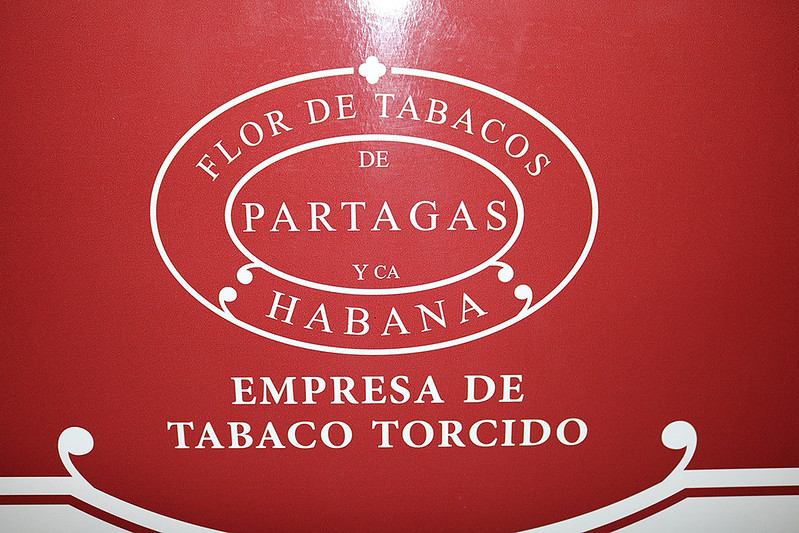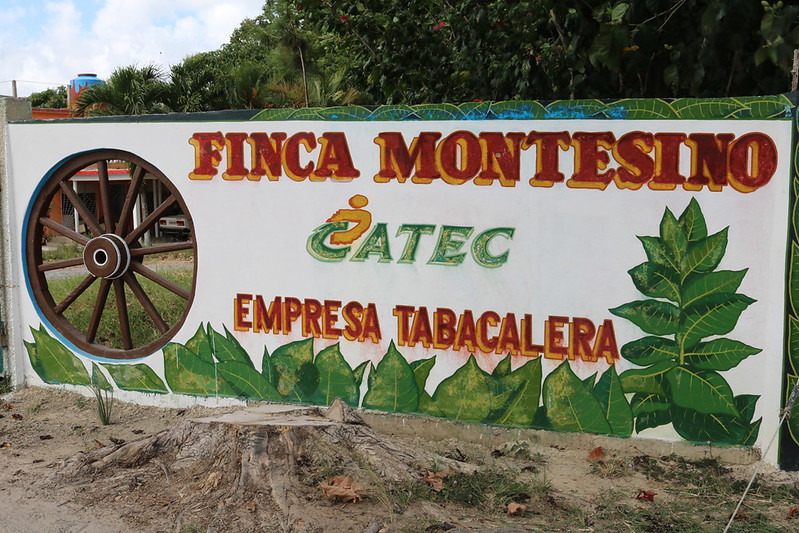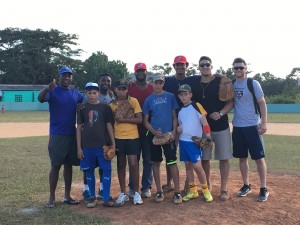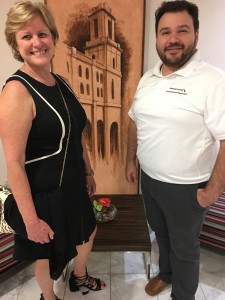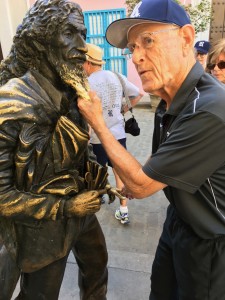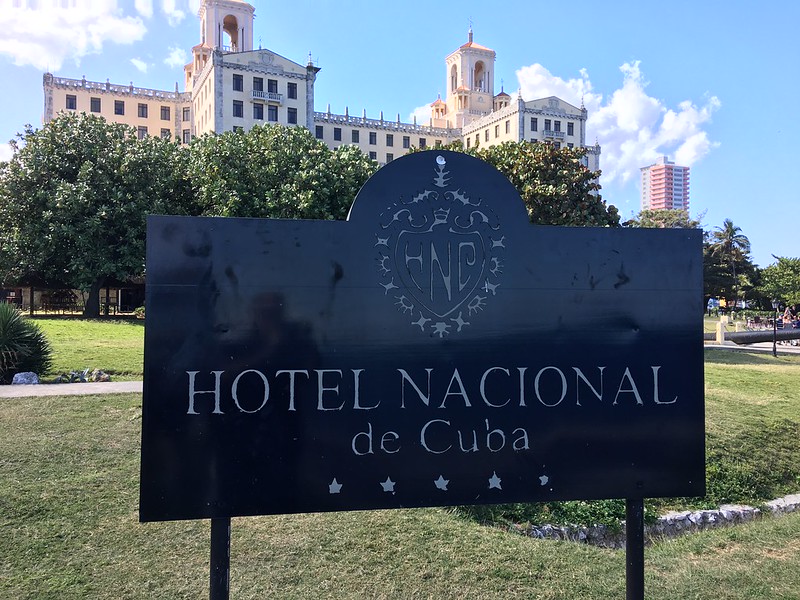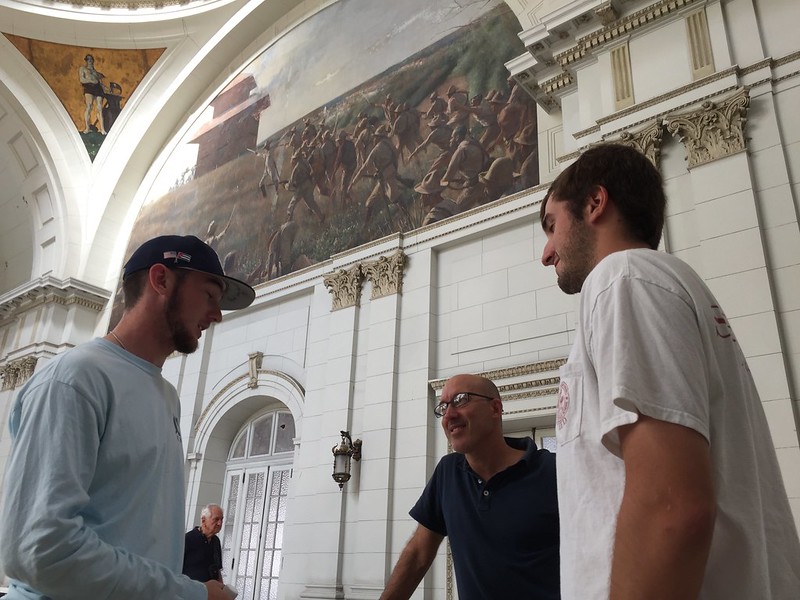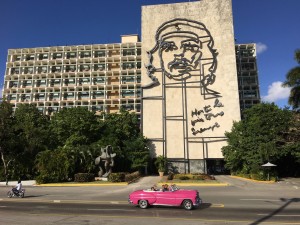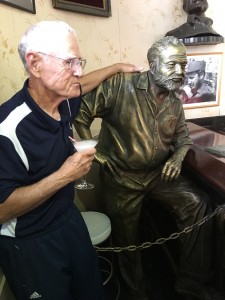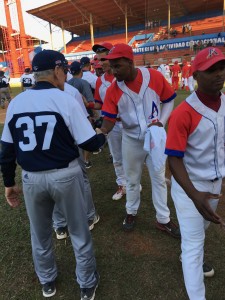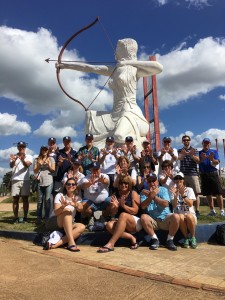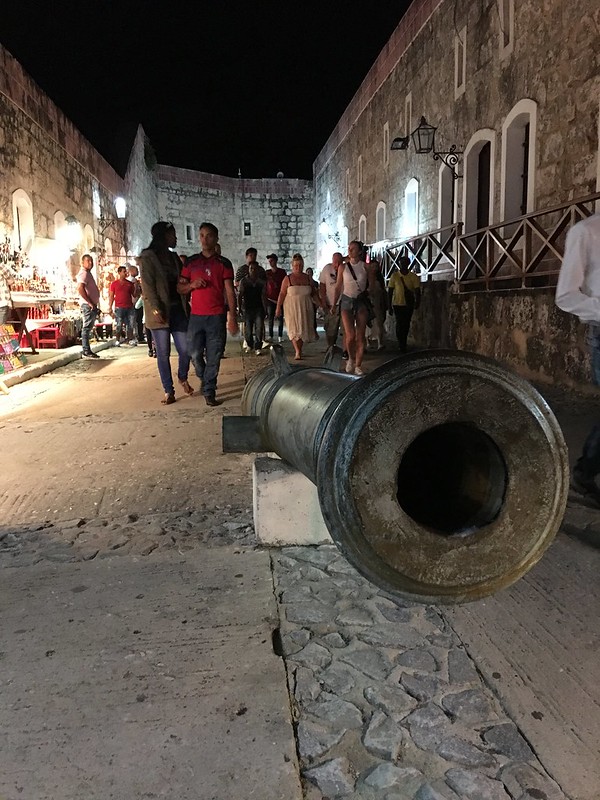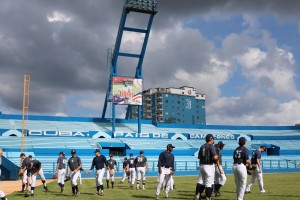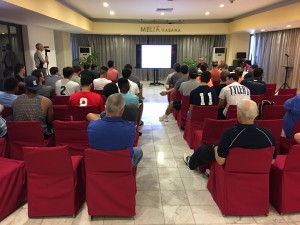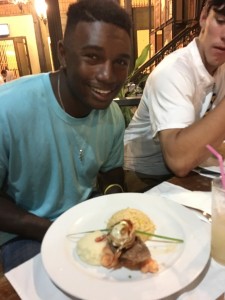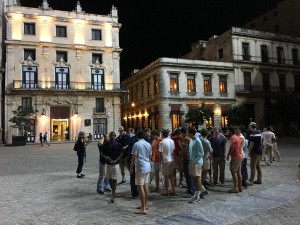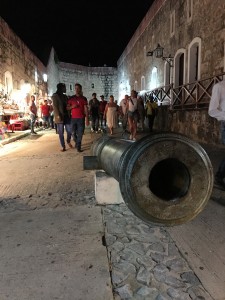On their last day in Cuba’s capital city Havana, the Rice Owls baseball team had a full day of educational and cultural events.
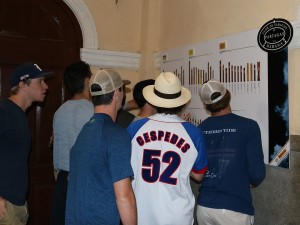 The day started at the government-owned Partagas Cigar Factory. Partagas is one of the oldest existing cigar brands, established in Havana in 1845.
The day started at the government-owned Partagas Cigar Factory. Partagas is one of the oldest existing cigar brands, established in Havana in 1845.
On Tuesday (Nov. 29), the guys visited a farm in Vinales, where they learned about growing, preparing and packing tobacco leaves. Vinales is said to have the optimal soil and weather conditions for the what is largely considered the best tobacco in the world.
In our Flickr photo gallery, we have limited pictures of the factory due to their photography rules.
The Owls were given a tour by a company employee, Olga, which included visiting with professional rollers and apprentice rollers. The apprentice rollers go through a nine-month training program before they earn a government certification to work with cigars. They then visited the factory floor, which is located on the fourth (top) floor of the the narrow but atrium-like facility. There they saw workers assemble cigars by hand in two big open spaces, on one side there were approximately 75 professional rollers and close to that amount of apprentice rollers on the other side.
Nowadays rollers wear their own earbuds and listen to their own entertainment, such as music, but Rice Professor Luis Duno-Gottberg said that for many years there was a sole employee called a “reader.” That person’s job was to read from the newspaper or literature all day to lift morale or inform and educate the rollers. Matter of fact, reading was such a big success that two Cuban cigar companies took their names from literature that was read to their employees — Romeo and Julieta and Montecristo.
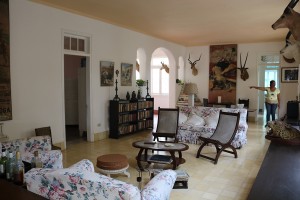 After the tour, the team left Old Havana and took a short bus ride to the Hemingway Museum. The museum is the former home of the famed writer Ernest Hemingway. Hemingway willed the property to the Cuban government. The home, which is said to have been left mostly intact, isn’t really a mansion but more like a really comfortable seaside retreat.
After the tour, the team left Old Havana and took a short bus ride to the Hemingway Museum. The museum is the former home of the famed writer Ernest Hemingway. Hemingway willed the property to the Cuban government. The home, which is said to have been left mostly intact, isn’t really a mansion but more like a really comfortable seaside retreat.
Finca Vigía, or “Lookout Farm,” was where Ernest Hemingway had made his home from 1939 to 1960, and where he wrote seven books, including “The Old Man and the Sea,” “A Moveable Feast” and “Islands in the Stream.” Hemingway left the island for good in 1960, the year after Castro overthrew the dictator Fulgencio Batista—and the year before Hemingway took his own life in Idaho.
 We were able to tour all of the grounds but not inside the house itself. A number of years ago a tourist broke a glass object in the home and the government hasn’t allowed visitors inside since. The property contains an outdoor pool, pool house and Hemingway’s Key West boat the “Pilar,” which is dry docked on land (see photo in the gallery). Separate from the house, but accessible by an outside stairway, is Hemingway’s writer’s room. In it sits a typewriter (which he wrote the books on), a telescope and a painting of himself. The house itself is up on a hill and contains a Picasso painting.
We were able to tour all of the grounds but not inside the house itself. A number of years ago a tourist broke a glass object in the home and the government hasn’t allowed visitors inside since. The property contains an outdoor pool, pool house and Hemingway’s Key West boat the “Pilar,” which is dry docked on land (see photo in the gallery). Separate from the house, but accessible by an outside stairway, is Hemingway’s writer’s room. In it sits a typewriter (which he wrote the books on), a telescope and a painting of himself. The house itself is up on a hill and contains a Picasso painting.
The team wasn’t able to complete its baseball games in Cuba, but baseball in this country has found them. Hemingway’s property includes a small baseball field, and the guys took advantage of it by doing some hitting and fielding with Cuban teenagers who work on the grounds. The field and teens are managed by former Cuban National Team member Jorge Rey.
It was then time for lunch.
After another short bus ride to the seaside town of Cojimar and the restaurant La Terraza de Cojimar, where they saw a tribute of Hemingway in the form of his own roped-off corner table and a bust made by local fisherman friends of Hemingway who melted down their boat propellers for the piece of art.
The final stop of the day was a 90-minute class of modern dance at the Company Rosario Cardenas de Havana. They were treated to a performance by the company and then hit the dance floor themselves for a participation portion of the performance to showcase their interpretive dance “skills.”
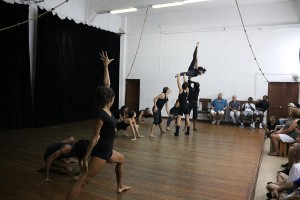 The class was attended by a Reuters news wire photographer for a story coming out later tonight or tomorrow. Coach Wayne Graham was interviewed by Reuters at the hotel today. We believe the story is about how Americans’ plans changed in Havana after Fidel Castro’s death.
The class was attended by a Reuters news wire photographer for a story coming out later tonight or tomorrow. Coach Wayne Graham was interviewed by Reuters at the hotel today. We believe the story is about how Americans’ plans changed in Havana after Fidel Castro’s death.
The class was made possible by Duno-Gottberg’s friendship with the company’s choreographer and director Rosario Cardenas.
On the bus ride back to the hotel, Duno-Gottberg held another mobile session. He asked the student-athletes to compare and contrast the factory setting at the tobacco company versus the rural tobacco farm the team toured Tuesday in Vinales.
Tomorrow morning we will check out of the Melia Habana and head east and spend most of the day touring Cienfuegos, Cuba. We’ll head north in the evening to Varadero, where we will hotel, hold a class Saturday and then fly back to the United States from Varadeo’s airport Sunday (Dec. 4)
Instead of the usual Fun Fact of the Day, we are going to leave you with a quote.
Hemingway once said, “I love this country and I feel like home. And wherever a man feels like home, apart from the place he was born in, that’s the place he was destined to be.”
Mouse over the picture below to open the Flickr photo gallery arrow buttons and view more images from the day.
If the photo gallery doesn’t appear or open, click here.

